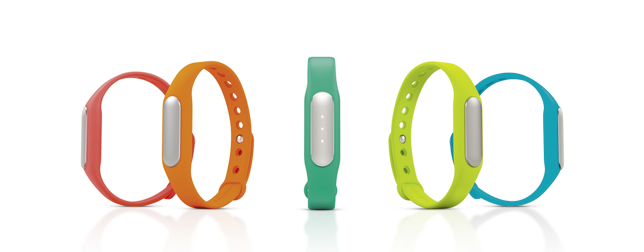“Even a pig can fly if it stands at the centre of a whirlwind” – Lei Jun, CEO of Xiaomi.
It sounds like a fiction but it’s real. Xiaomi – a Chinese startup company in Smartphone and wearable device has much attention from all over the world. Their rise has been unprecedented for merely five years. The Chinese Tech company has defeated Smartphone giants (LG, Sony) and has become the third biggest Smartphone manufacturer in the world. Xiaomi CEO, Lei Jun released the Mi Band in 2014 – marking the beginning of Xiaomi’s activities in the wearable market. Surprisingly, after a year Xiaomi became the world’s second largest seller of wearables -after Fitbit. According to IDC, in the first period of 2015, Xiaomi sold 2.8 millions of Mi Bands; thus concluding why Xiaomi makes up 24.6% of the wearable market worldwide. Today, Xiaomi is the most valuable private tech startup in the world.
WT | Wearable Technologies has been digging to find out what the company’s secret to success is.
Mi Band
Mi Band is designed at the core of wearable device; with the ability to track your steps, distance, calories burned, activities and sleep. The Mi Band consists of the oval-shaped tracking module which has a matte chrome finish with a neat and a variety of colored rubber up. The Mi Band is super light and comfortable to wear. A plus for Mi Band is their 30-days of battery life; which is still a challenge for many wearable devices now. Moreover, the Mi Band is waterproof -down to 1m for up to 30 minutes. It means you can definitely wear the device all day long, even when you are taking a shower! The downside to Mi Band is it does not provide the most accurate tracker. However, its accuracy is acceptable in terms of what the consumer wants. Maybe this is so because sometimes Mi Band can overestimate your steps and distance, making you think you worked more than you actually did.
Price Strategy
Selling a full-feature tracker at a cheap price of $14.99 is a smart strategy when approaching the wearable market. They are able to keep this price because they are only selling their products online – where prices don’t need to include a profit margin for retailers. Moreover, Xiaomi keeps marketing costs low by marketing to their fan base instead of advertisements. Their scheme is quite smart, they host “fan parties” every few weeks in different cities. At these events Xiaomi Executives can meet enthusiasts and provide them with fun gifts. Besides, they have an army of employees to interact with consumers on social media such as Weibo (Chinese twitter).
In 2015, 40% of wearable devices on market are sold under $100. The other 60% are marked at high price range; such as Google and Pebble. However, despite the good quality of these products these companies have not received an ideal turnover. Even so people are now curious about activity trackers and becoming connected to their health. Nevertheless, it seems that consumers either can’t or won’t spend a lot of money on wearables.
Xiaomi’s low price seems to be enough to satisfy the curiosity of common consumers not only the early adopters. The success of Xiaomi’s price strategy alarms many wearables producers. The question that remains is when will the rest of the activity tracking companies be able to release their products for under $100?
Besides Xiaomi range of smart gadgets as smartphone and Mi Band, Xiaomi CEO invests in cool electronic bike called Yunbike that can connect with smartphone. The Yunbike is a foldable e-bike with 16kg weights. The point is that users can hit 25 km/h with a single charge to travel as far as they expect. To experience more with Yunbike, users are encouraged to connect with its app on smartphone. Let’s see if Yunbike can be the next big hit of Xiaomi.
To round things up, according to its CEO Lei Jun, in an interview with The Wall Street Journal stated that Xiaomi’s success formula is “simply about seizing the right opportunity.”












